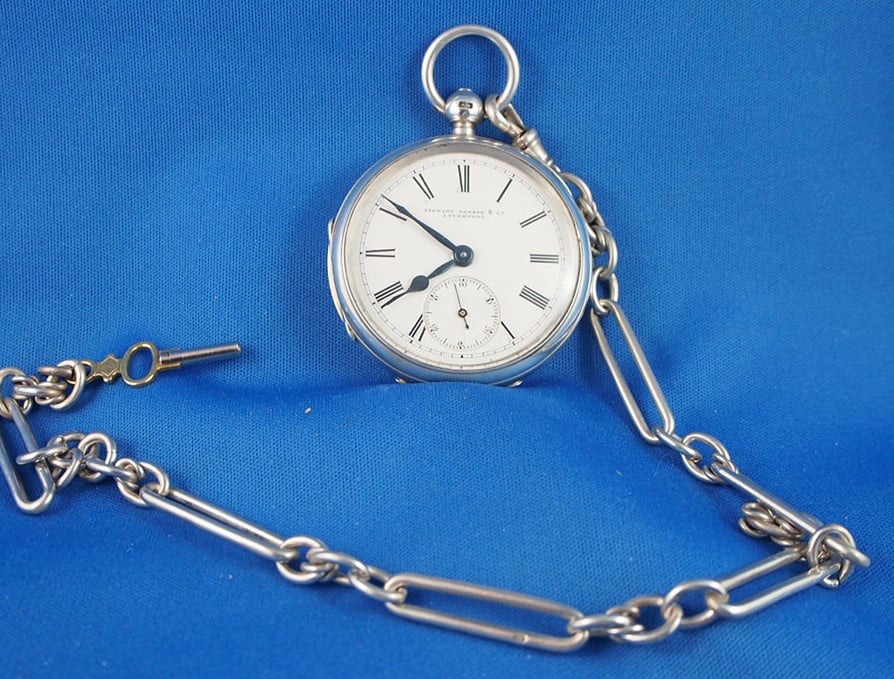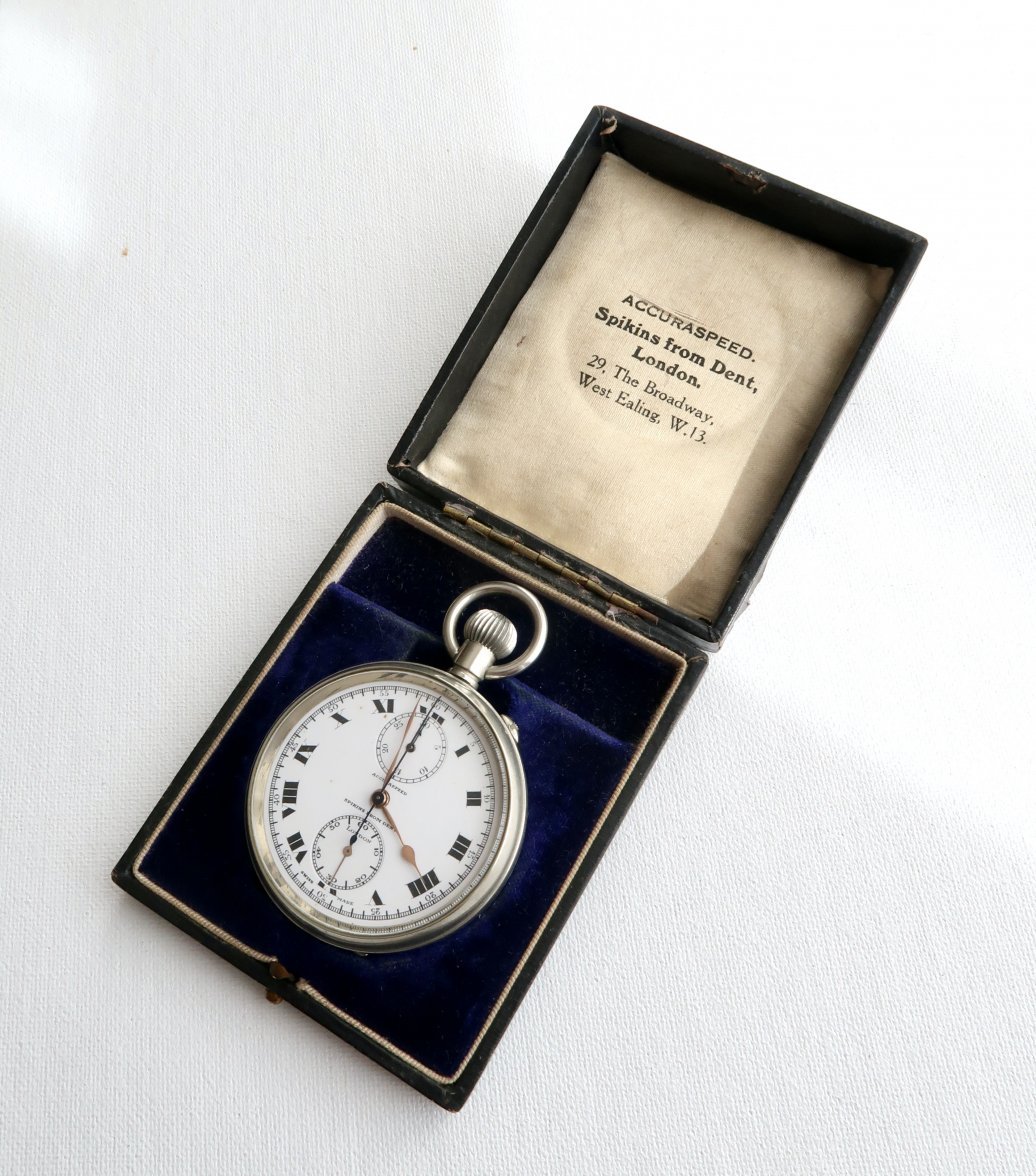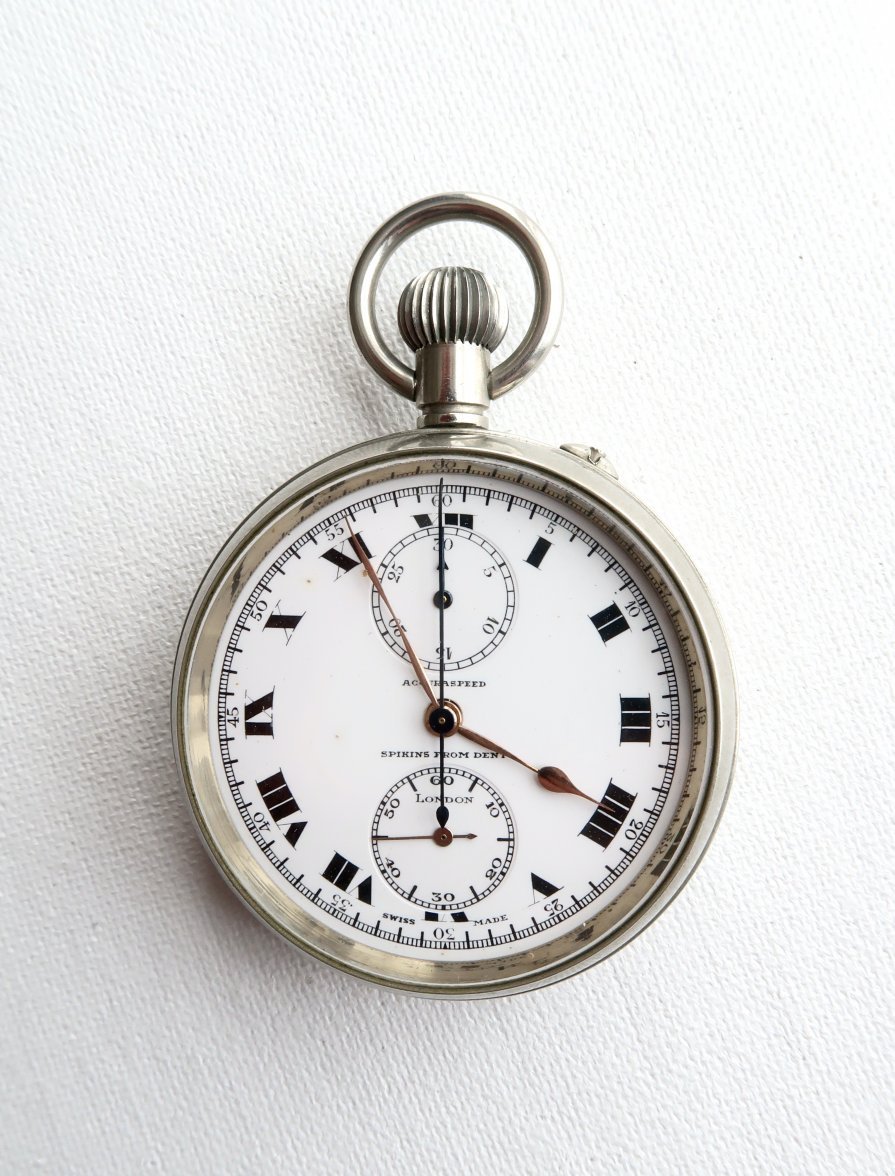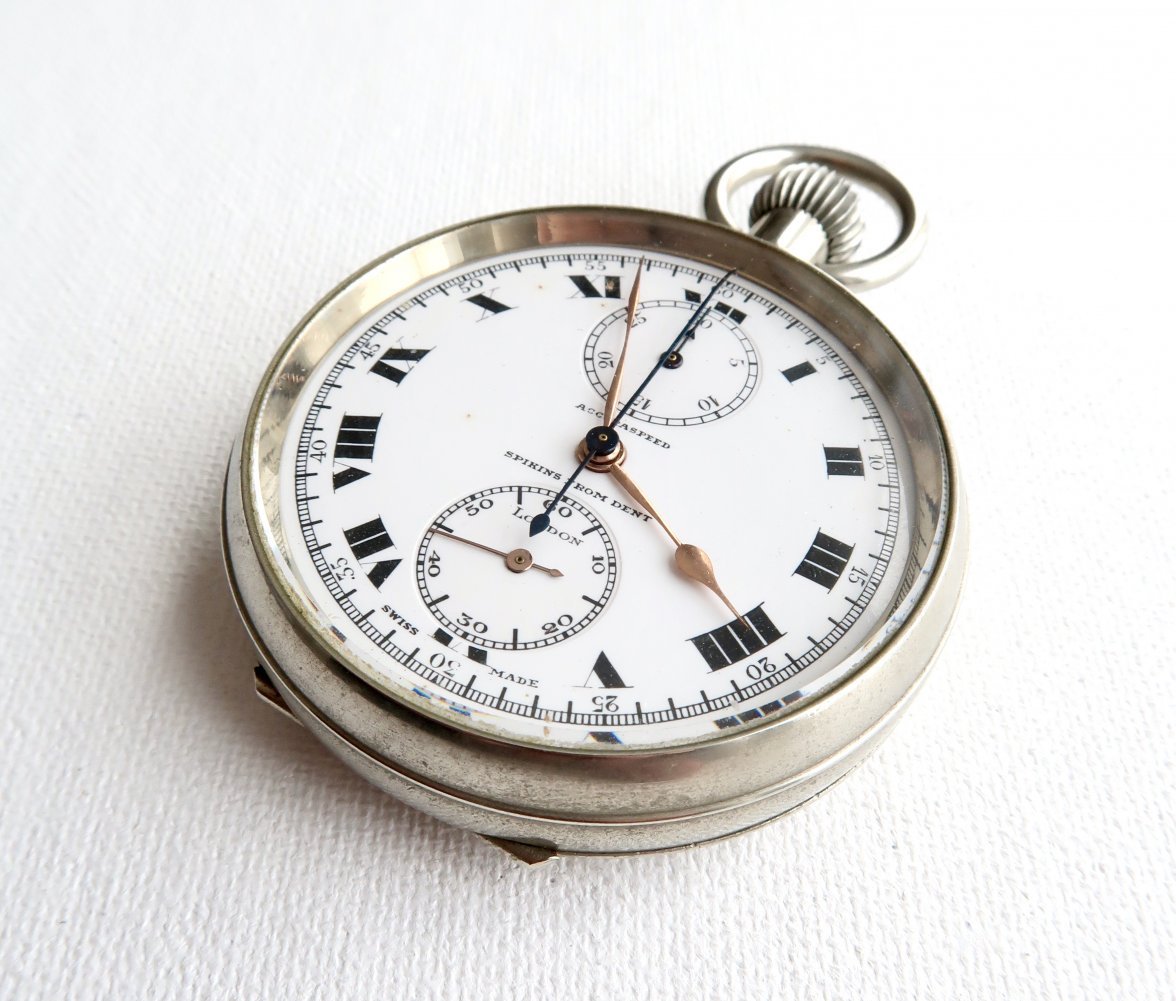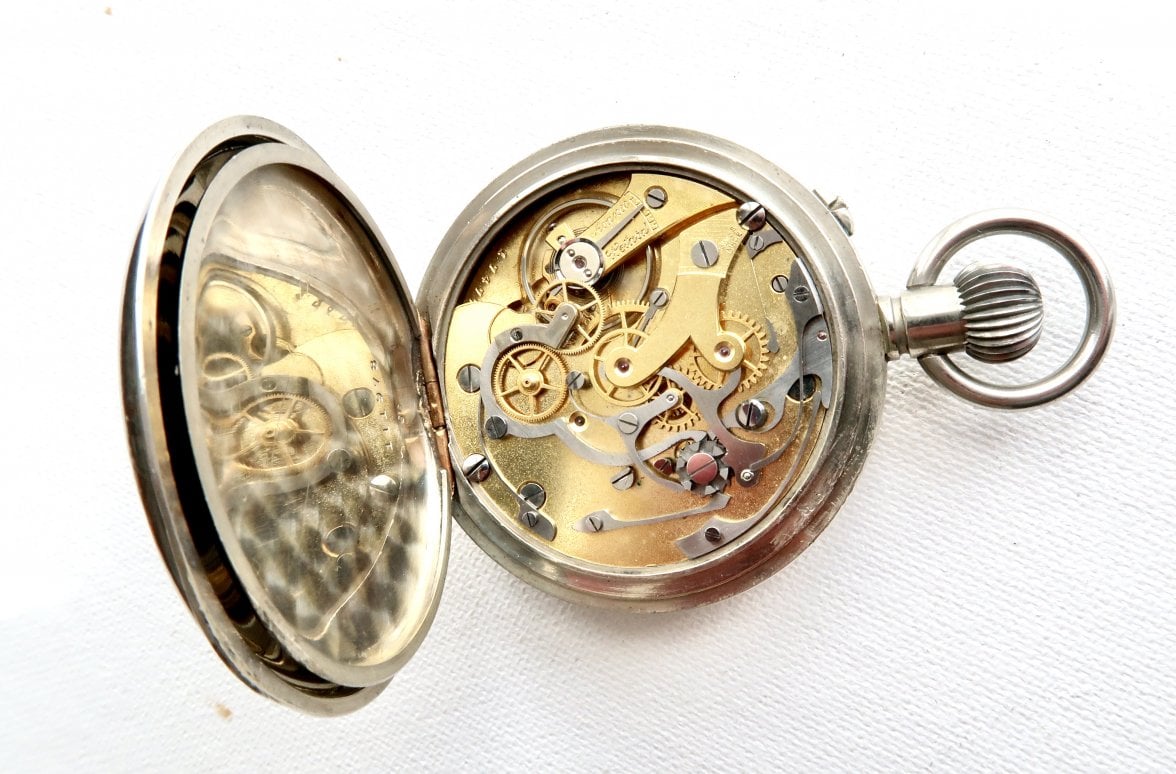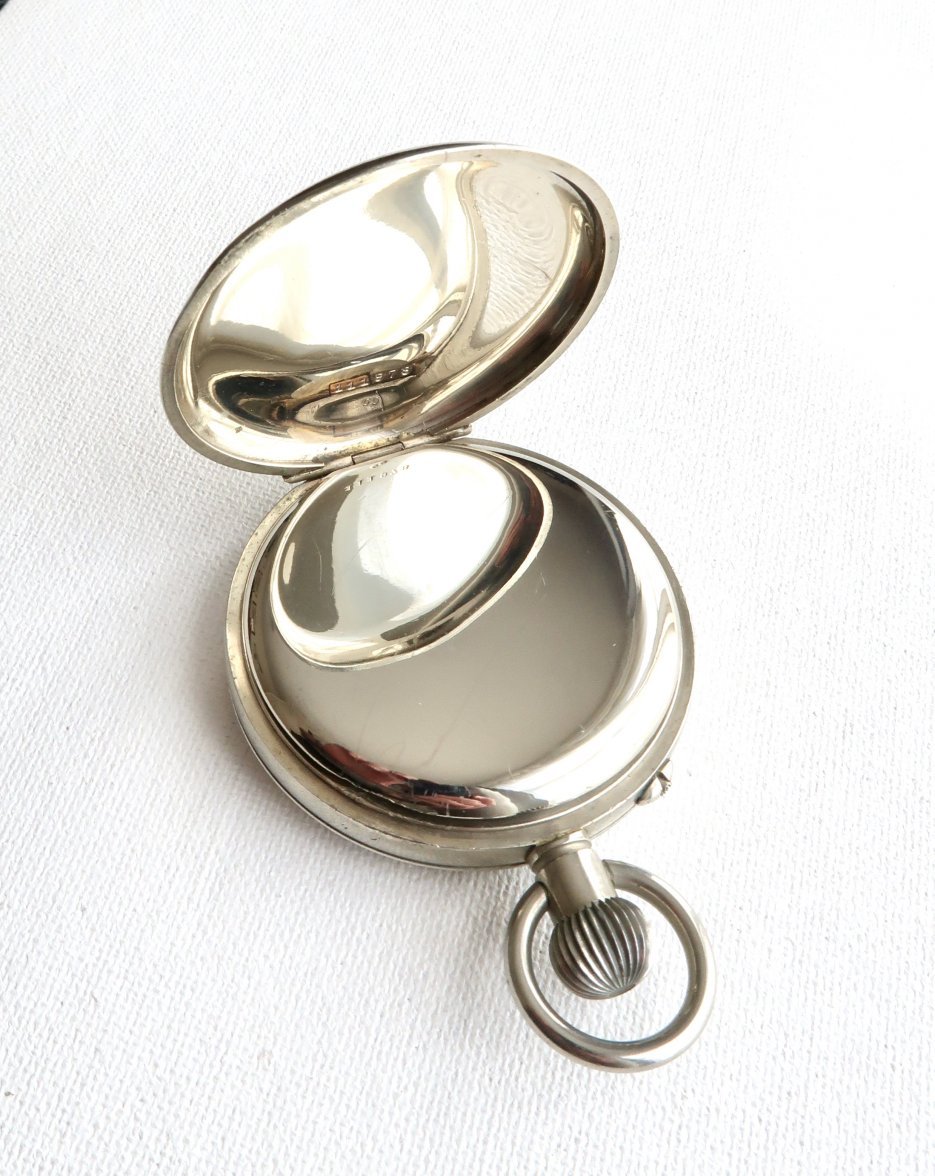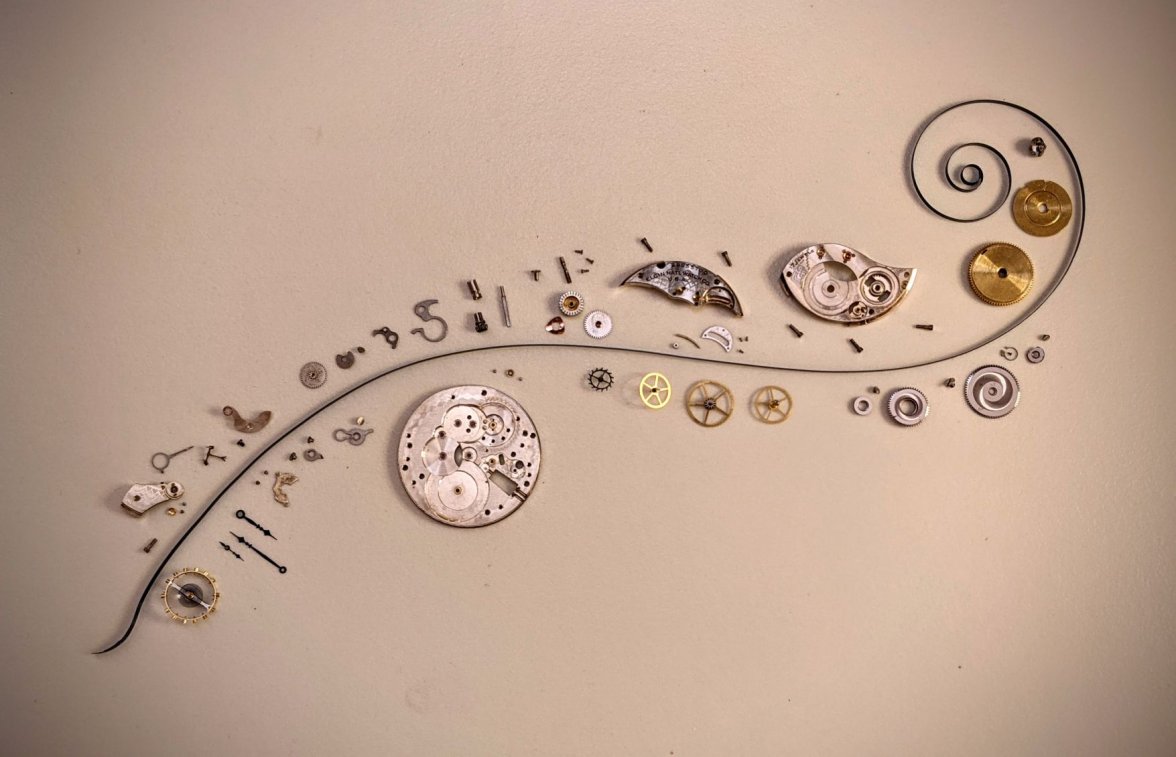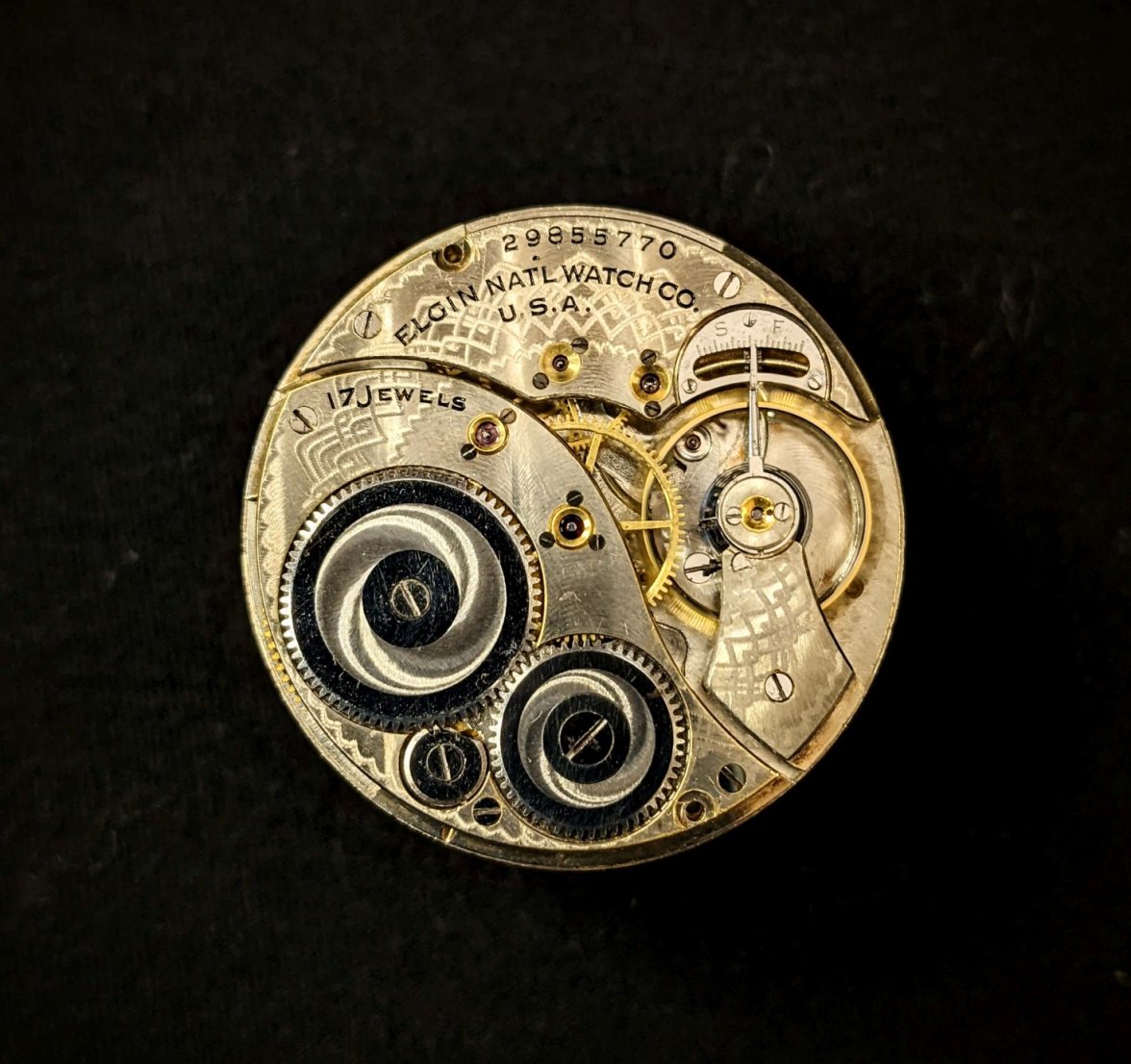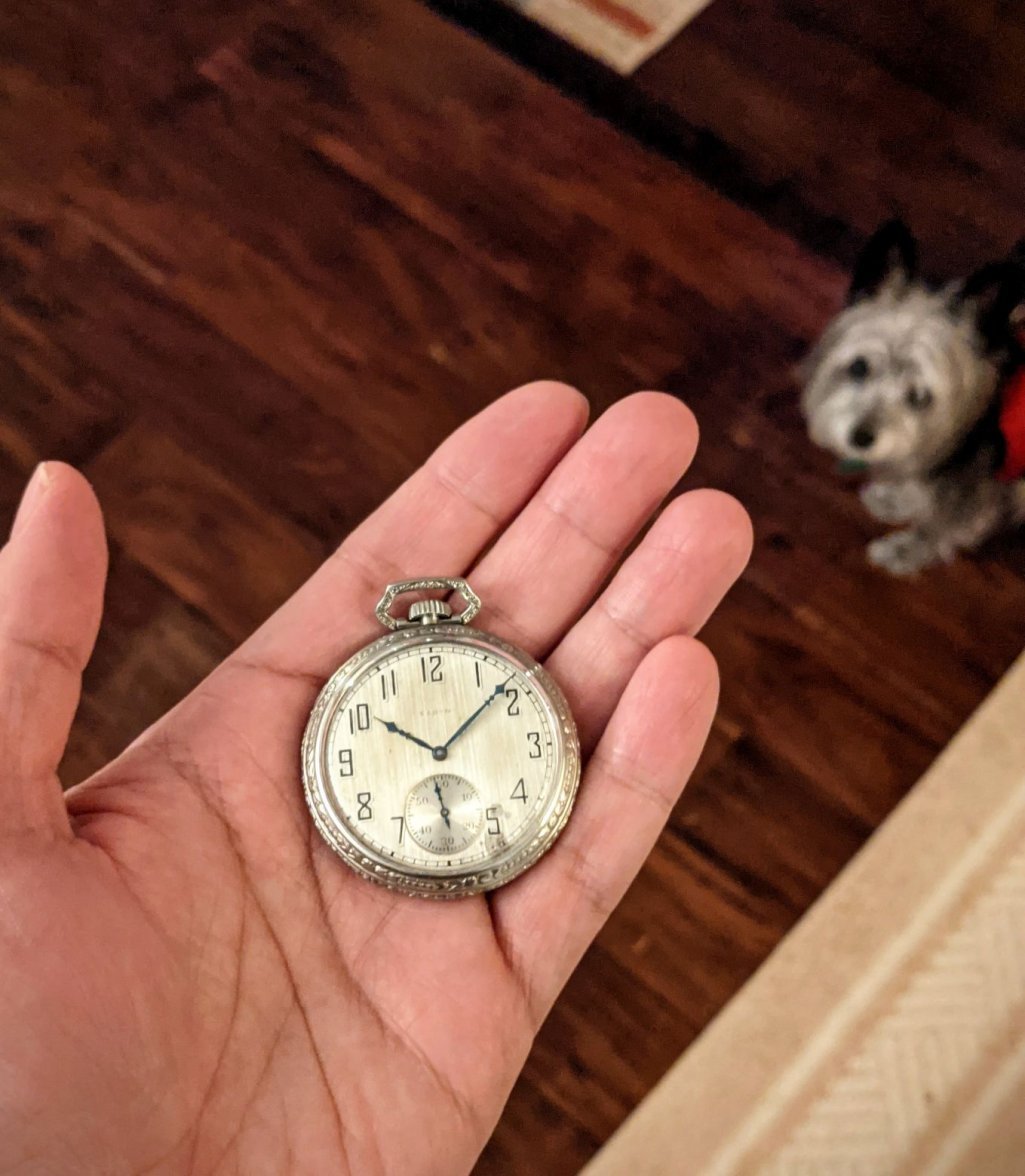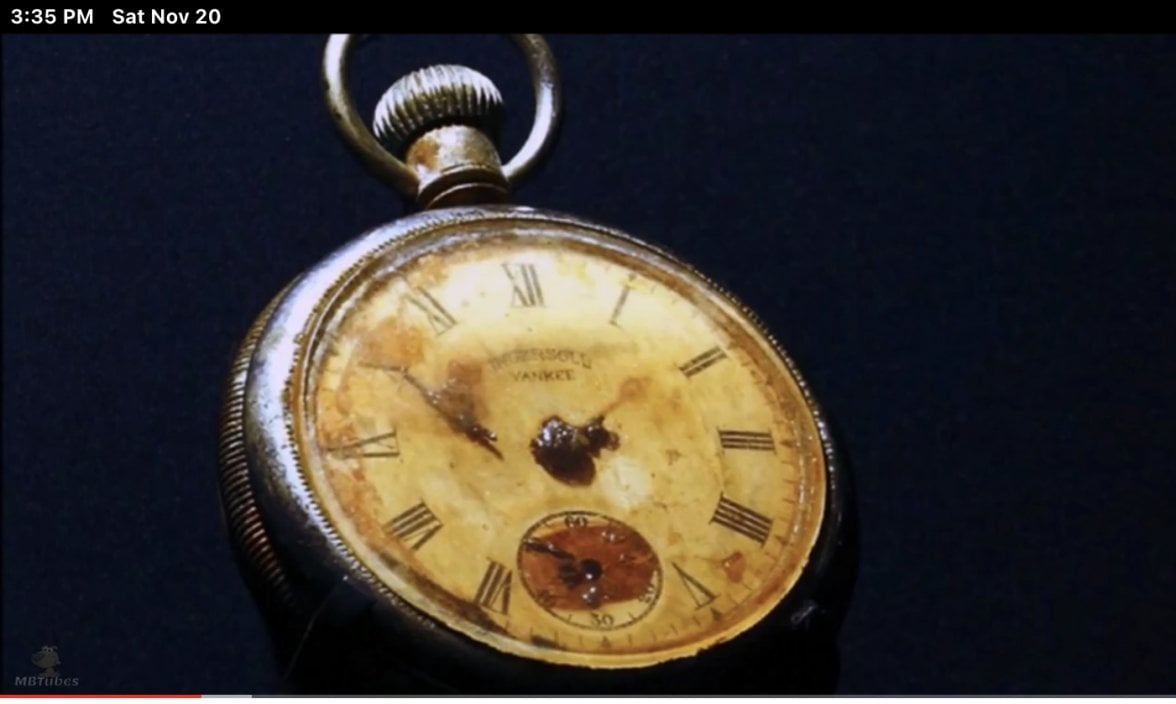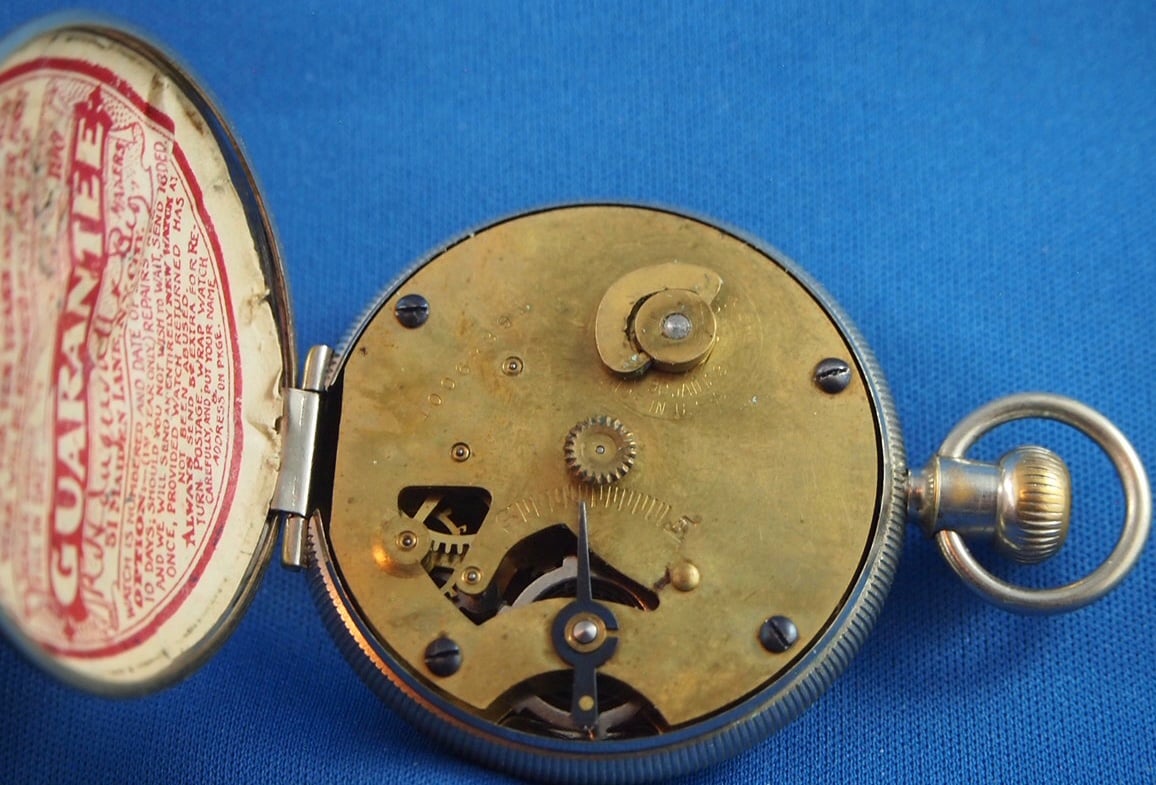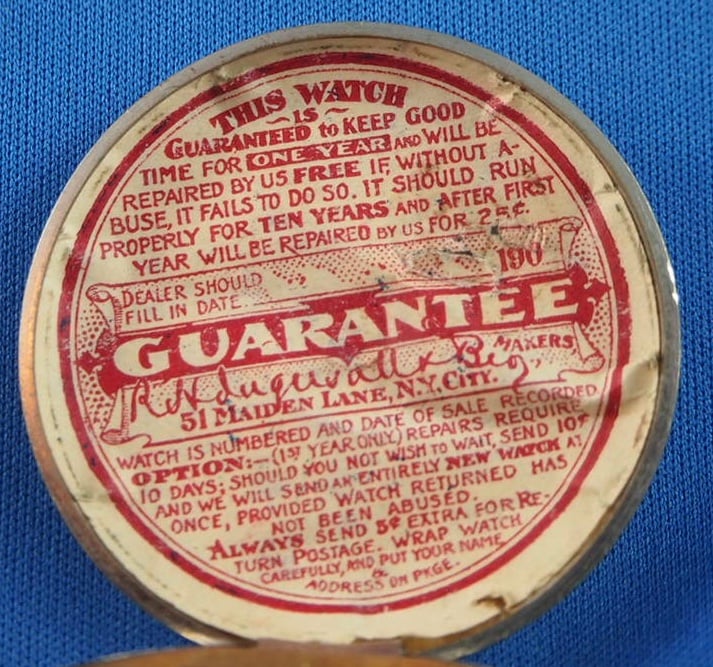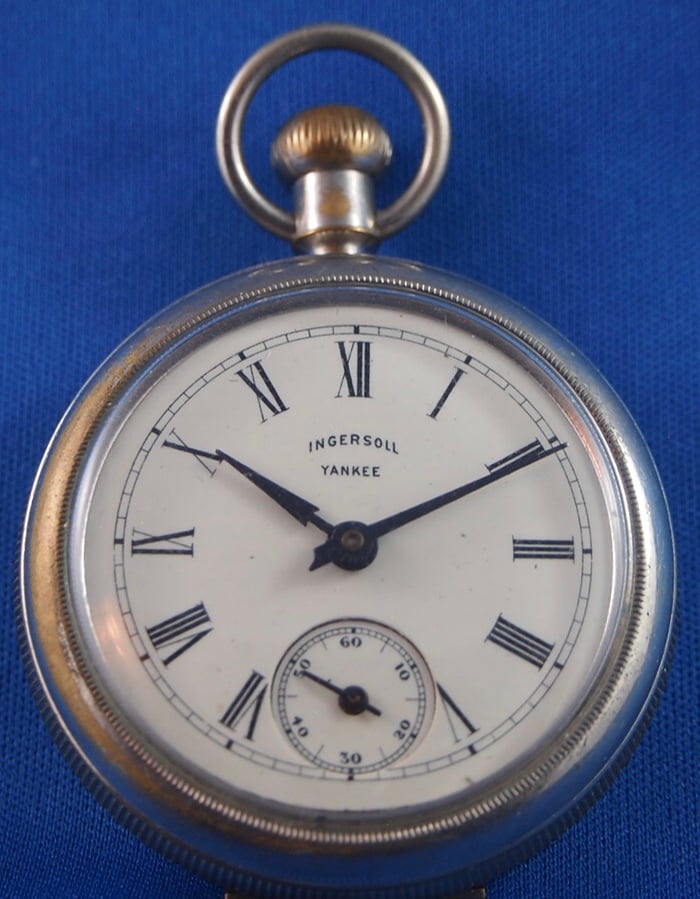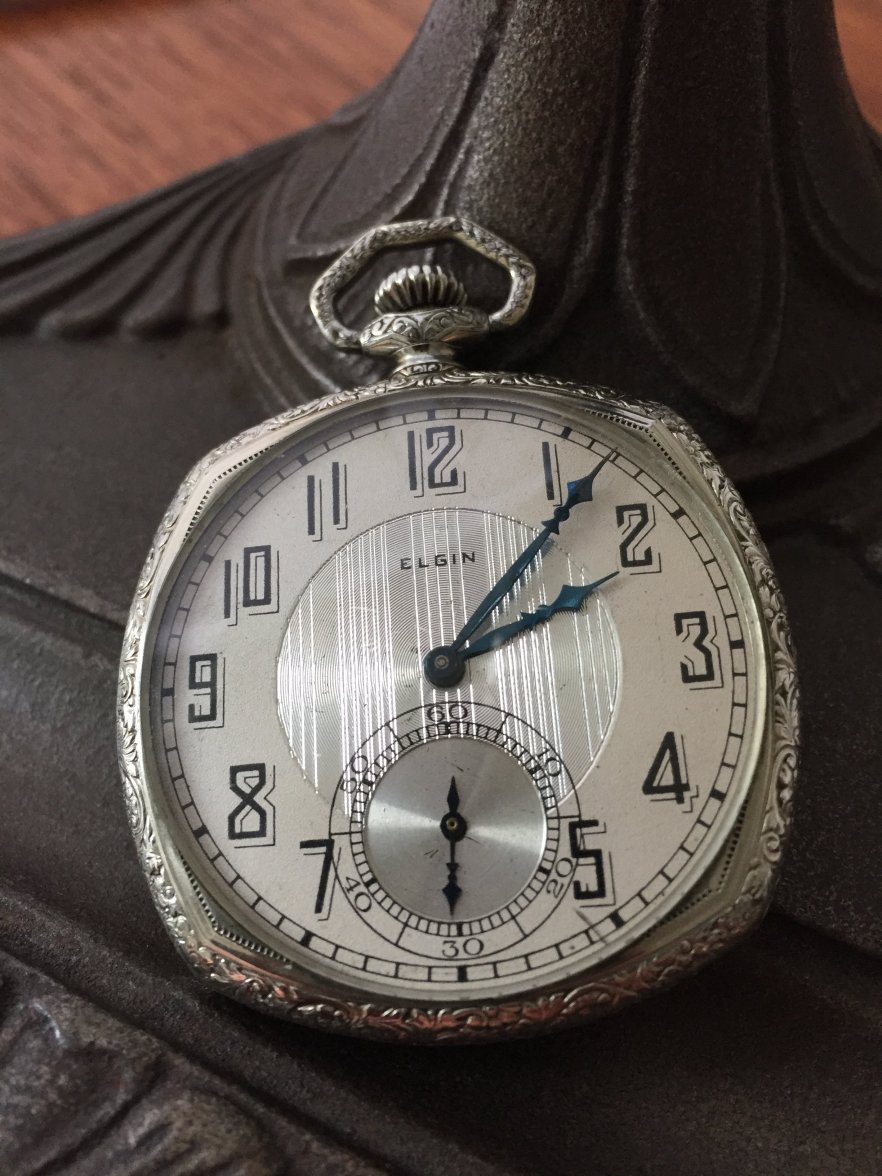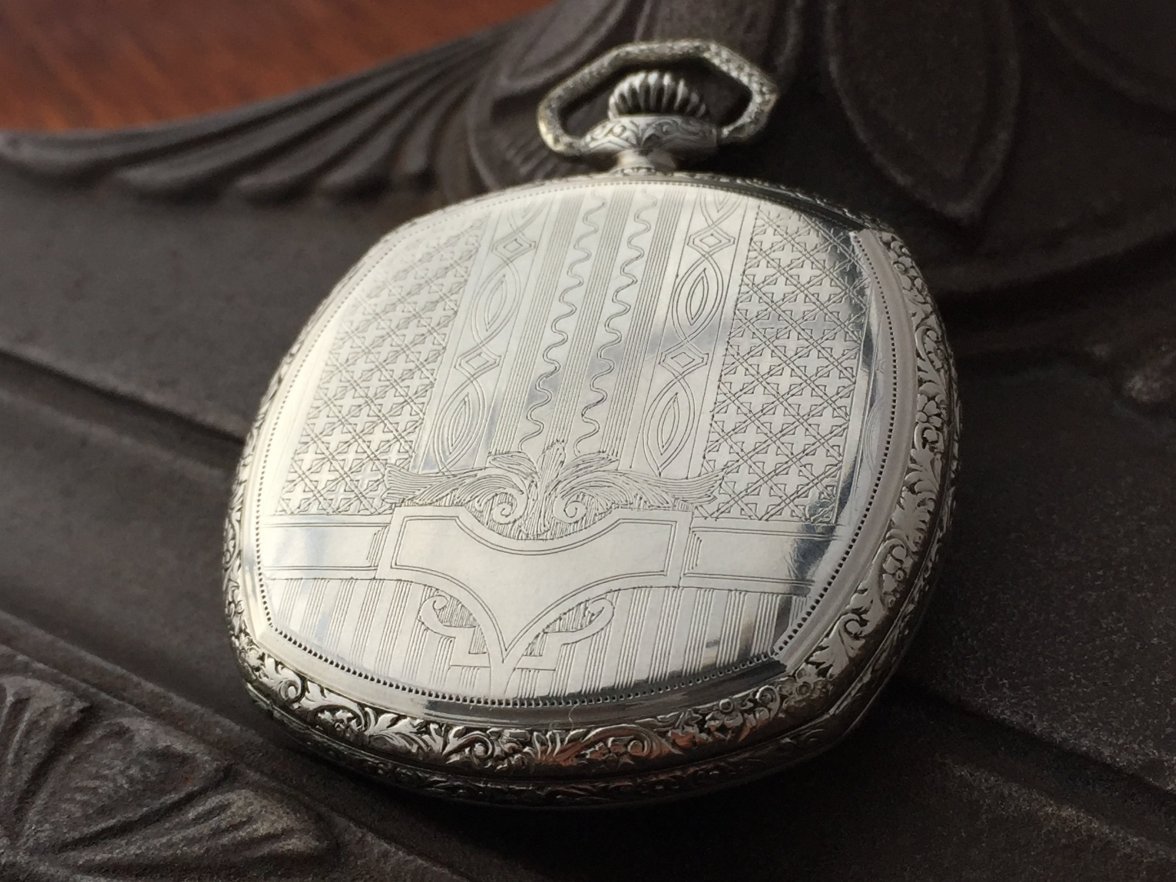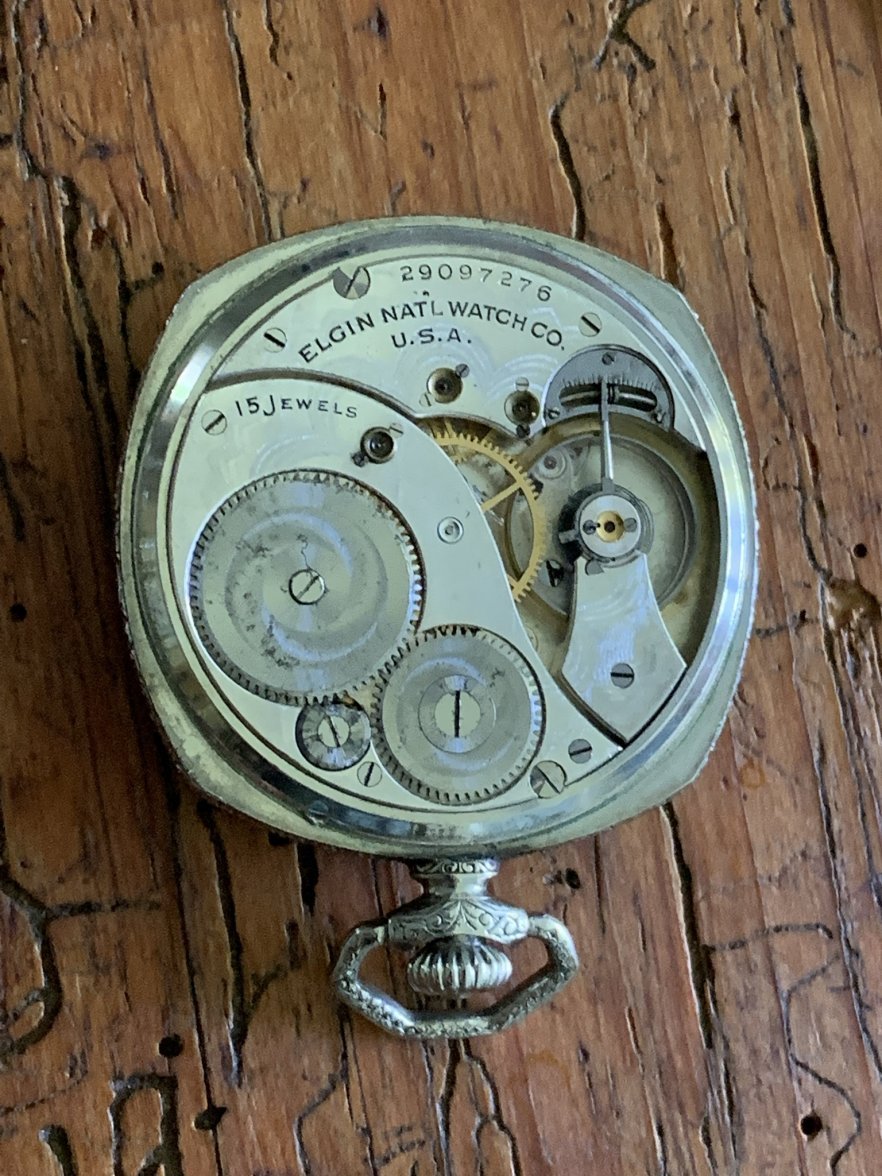Canuck
·You’re familiar with this one. My 135 year old Richard Dawson, Liverpool watch. I’ve shown it here before. I remembered today that it had a sterling silver chain on it when I got it. I removed the chain, then binned the chain and the watch. Over the last three days, I have done a bunch of work on the watch, Today, I resurrected the chain and cleaned it up and put it on the watch. The chain weighs 65.5 grams. That is over two ounces, Troy. Here they are together.
I did some more work on this one today. I realized when I fitted the new mainspring, that it was loo long, and this results in a shortened run time on a full wind. I was getting about 12 hours on a full wind. It had been worked on before I got it, and someone had no clue about the peculiar cannon pinion arrangement on the watch, and they omitted a domed tension washer, and the cannon pinion was a very loose fit. Today, I shortened the mainspring, fabricated a domed steel tension washer, and put it all back together. Regulating this watch is a guess and by golly arrangement as it has a 14,400 beats per hour escapement which is not compatible with modern timing machines. Stay tuned.
